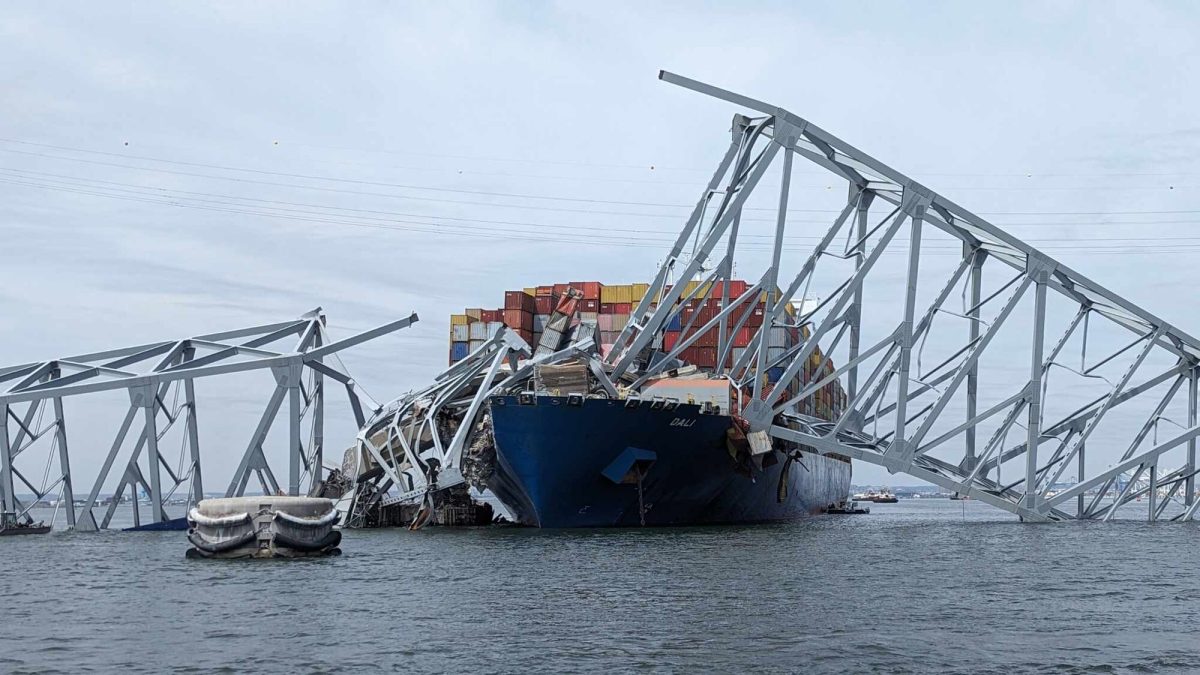The Francis Scott Key Bridge in Baltimore collapsed on March 26, causing major economic problems for the U.S. After a Dali cargo ship rammed into one of the supports holding up the Key Bridge, hundreds of tons of metal littered the Inner Harbor, bringing disruptions across the area.
Each year about 50 million goods such auto parts, sugar, and coffee are delivered to the Inner Harbor, which makes it one of the top five ports in the U.S. The bridge’s sudden unavailability will create a rippling effect that could impact the entire country.
“This is not just going to impact Maryland. Maryland doesn’t need any favors,” Gov. Wes Moore said to NPR. “What we need right now is bipartisan support on getting our economy going again, because this is impacting the farmer in Kentucky, this is impacting the auto dealer in Ohio, this is impacting the restaurant in Tennessee, this is impacting all of us, so we have to move swiftly on it.”
Supply chains all over the country depend on the ships that come though the Inner Harbor. After the bridge collapsed, supply chains became disrupted as supply ships were either stuck in the harbor or could not get in to deliver supplies to U.S consumers. Although issues have already started to arise, Mitch Merriam, vice president of borders and maritime security at K2 Security Screening, is still holding out hope.
“While there will be near term disruptions in auto imports and exports, I’m confident that Customs and Border Protection, regional ports, and terminal operators will work closely with the auto industry to identify optimal shipping alternatives until the Baltimore port resumes vessel operations,” Merriam said to CNBC.
To try to counteract this possibly devastating effect, an alternative trading route is being constructed for ships. This route will be temporary and only ships deemed essential will be allowed to use it. The alternative route will “be marked with government lighted aids to navigation and will have a controlling depth of 11 feet, a 264-foot horizontal clearance, and vertical clearance (of) 96 feet,” according to the “The Washington Post.”
Another option that is in the works is to send some of the ships to other east coast ports. Ships will be rerouted to harbors in Virginia, Georgia, and Pennsylvania during the disruption, and these ports will be able to handle some of the cargo ships that are coming. Nevertheless, it will still cause intense backup for companies.
“The impact is significant for the U.S. in terms of loss of export capacity,” global analyst at Kpler, a commodities analytics firm, Alexis Ellender said to “The New York Times.” “You may see coal cargoes coming from the mines being rerouted to other ports instead.”
The workers of the Key Bridge port will also feel some of the pressure. For many in the Baltimore area, the Key Bridge was known as a blue collar bridge and an emblem of Baltimore as a working port city.
“The port directly employs up to 15,000 workers, you know, indirectly helps support more than 100 and almost 140,000 jobs in the Baltimore region,” a fellow in Brookings Metro, Joe Kane said to Brookings. “So, there’s like direct and indirect, you know, economic effects within sort of the Baltimore region, if you will.”
The bridge will take around five to seven years to rebuild, but experts hope the economic effects will have dissipated before then.
“The path to normalcy will not be easy,” the U.S. transportation secretary, Pete Buttigieg said to “The New York Times.” “It will not be quick, and it will not be inexpensive.”




